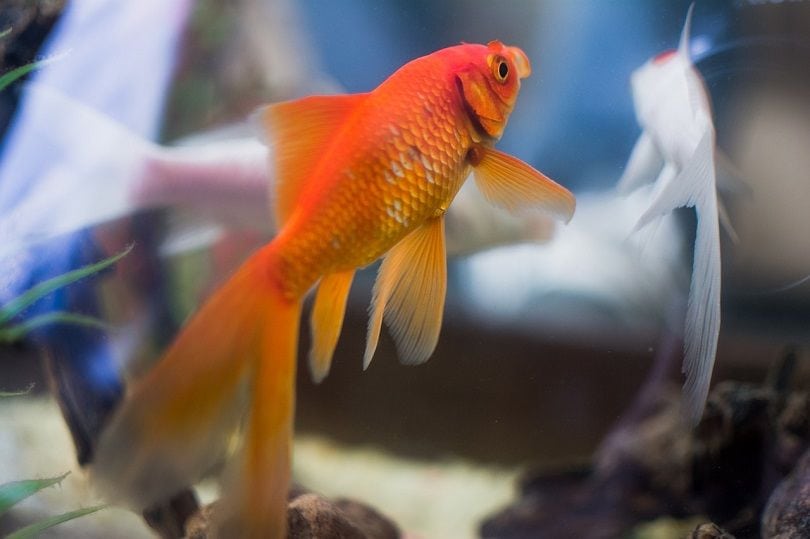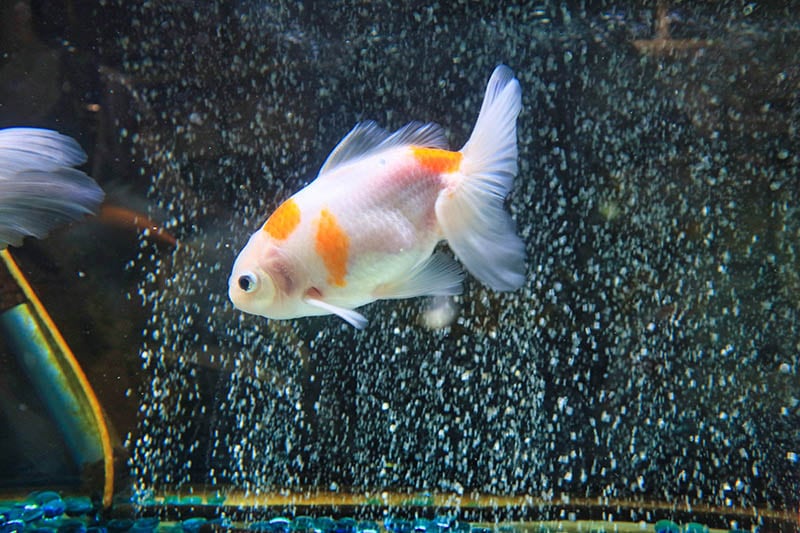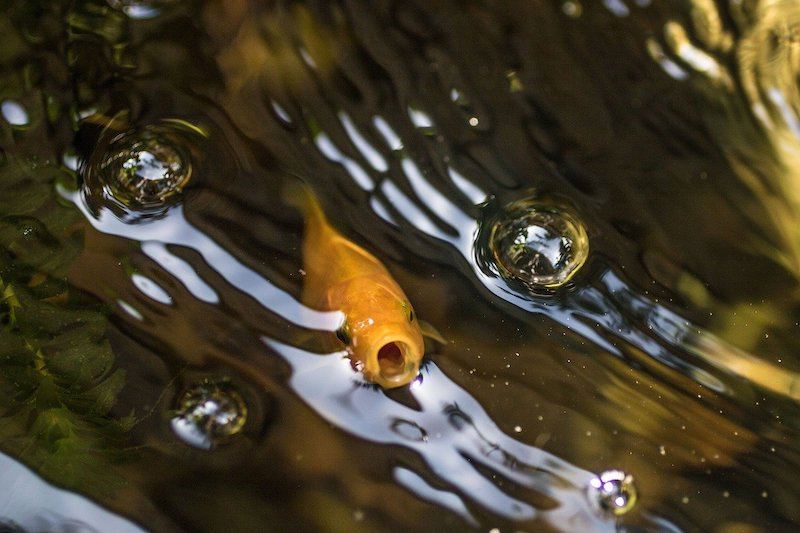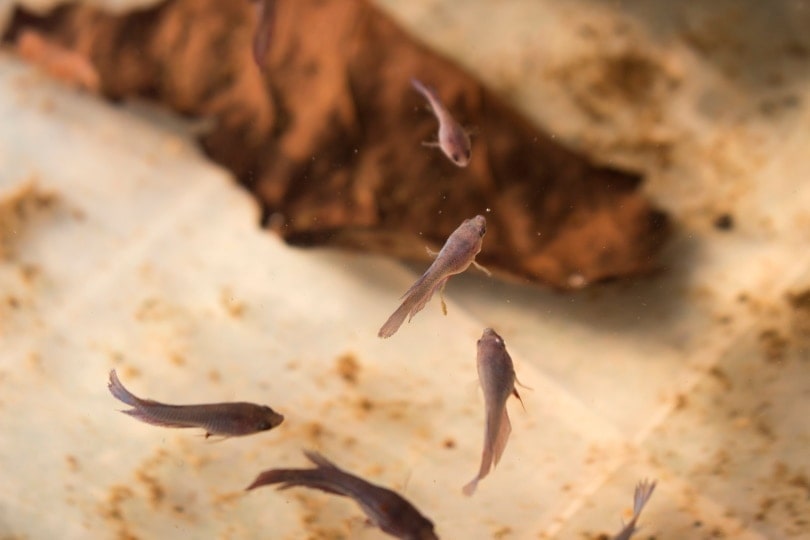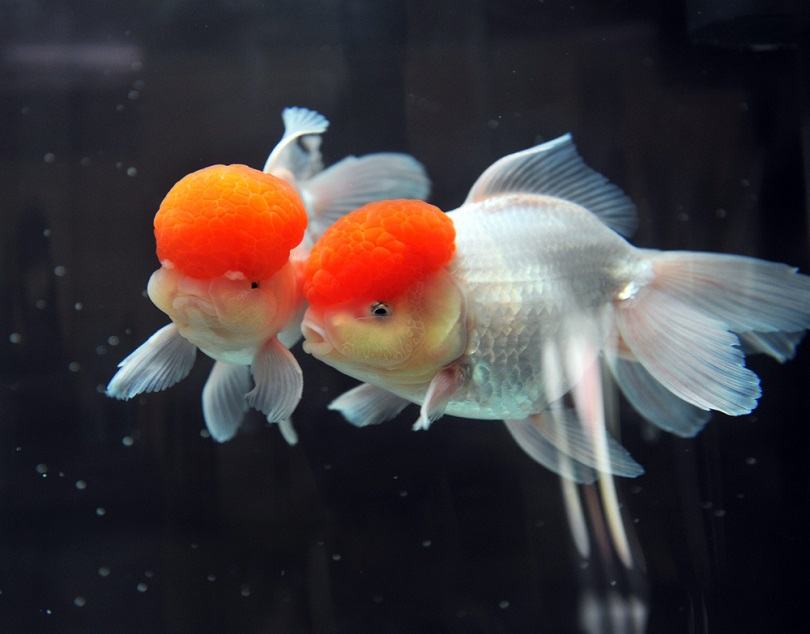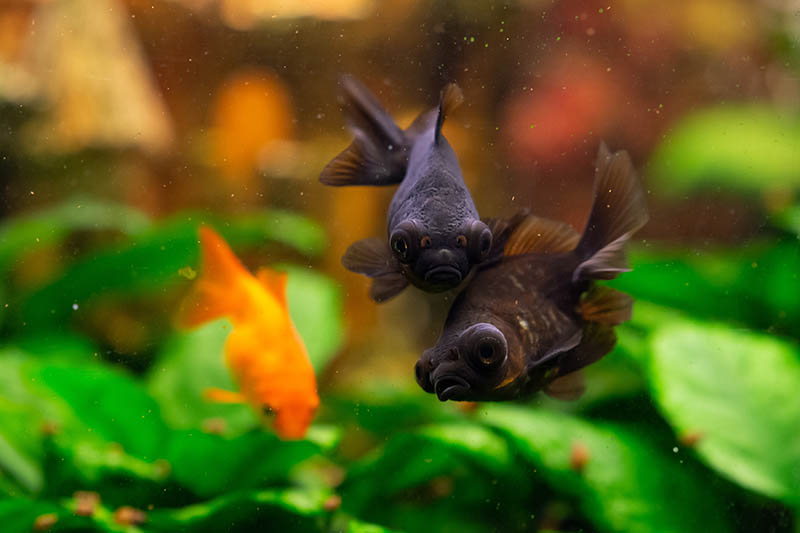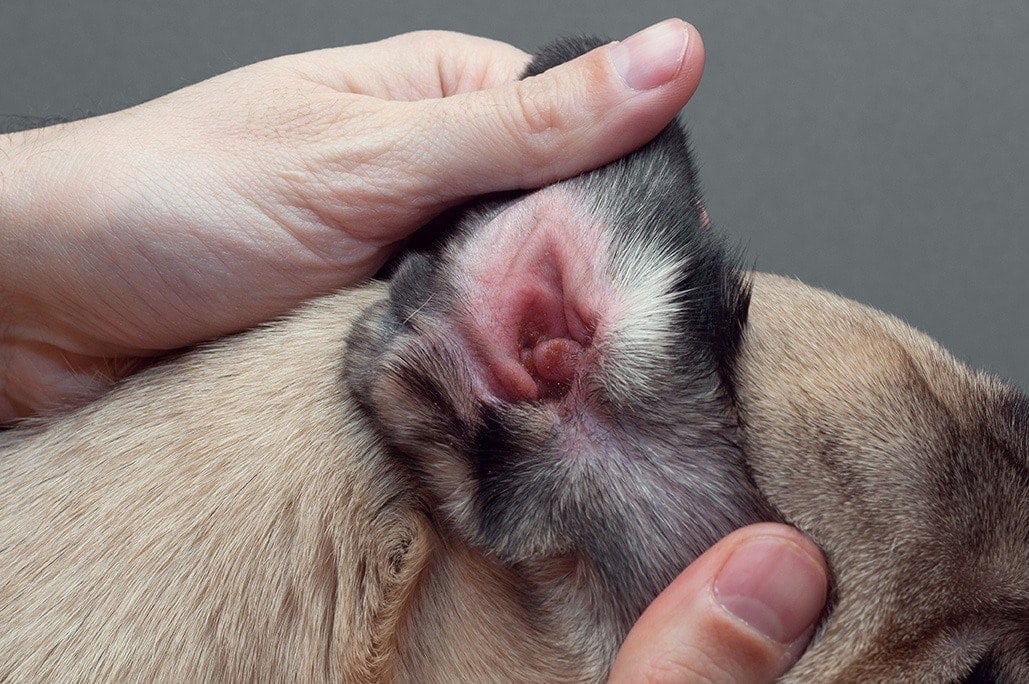Eelgrass (Zostera Marina): Facts, Care Guide & Growing

Updated on
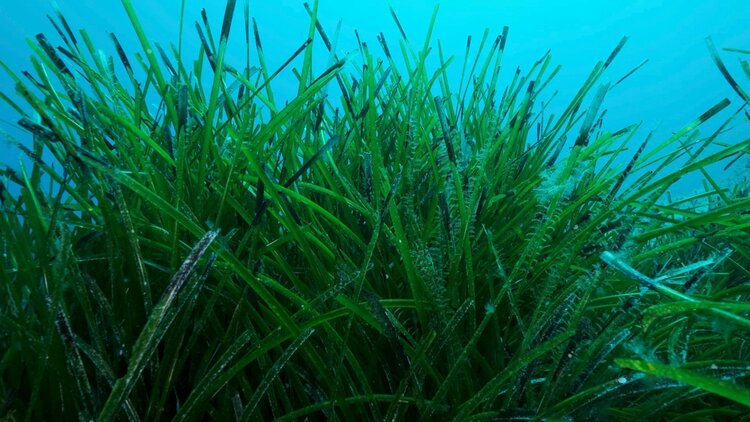
Eelgrass is a type of widely distributed seagrass under the genus of Zostera. Eelgrass is a type of flowering plant that forms grass-like beds in an aquarium. Eelgrass has the potential to reach a whopping 3 feet tall if the conditions are ideal to thrive and grow.
Eelgrass prefers freshwater aquariums with low doses of aquarium salt, as they originate from the temperate waters of tropical estuaries. It is commonly found in shallow waters along shorelines and originates from Anacapa, Santa Cruz, as well as the Santa Rosa Islands, where it grows in shallow water to receive enough sunlight for appropriate health and growth.

Useful Information About Eelgrass
| Family Name: | Zosteraceae |
| Common Name: | Eelgrass |
| Origin: | Anacapa, Santa Cruz, and Santa Rosa Islands |
| Color: | Light to dark green |
| Size: | Up to 3’ |
| Growth Rate: | Fast |
| Care Level: | Easy; suitable for beginners |
| Lighting: | Moderate to high |
| Water Conditions: | Temperate waters and a high pH between 7.0 to 8.0 |
| Minimum Tank Size: | 20 gallons |
| Supplements: | Fertilizers, root tabs, CO2 (optional) |
| Placement: | Foreground |
| Propagation: | Self-propagation creating runners |
| Compatibility: | Other low growing aquatic plants |

Eelgrass Appearance
Eelgrass displays light to dark green slim blades of leaves that resemble an appealing ribbon-like structure that sways gently in the current of the water. The eelgrass plant creates a green carpet along the bottom of your aquarium and has a creeping growth pattern in your aquarium. Eelgrass leaf blades can come in various shades of green, determined by the water conditions and lighting availability.
Runners help the aquatic plant to self-propagate and create an intricate lush green seagrass pattern along the bottom of your aquarium. Eelgrass beds not grow past the waterline. The roots anchor the eelgrass into a suitable substrate. Eelgrass contains many rhizomes that have many nodes and developing roots. The long alternate leaves grow in various sizes, creating a flat and organized look in your aquarium. Trimming the tips of the eelgrass leaf blades will make the tips leveled out and even.
The roots of the eelgrass plant grow deep into the substrate and root quickly, while the white rhizomes intertwine in the substrate.
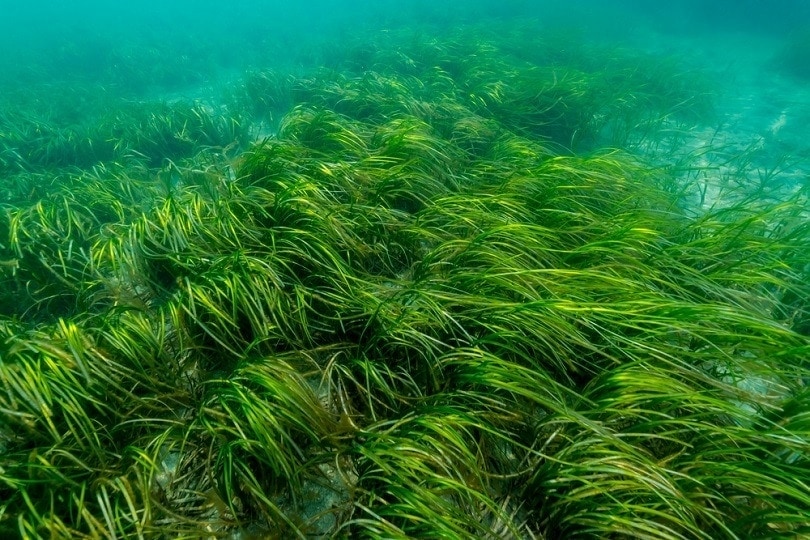
Where to Find It?
Eelgrass can be found in most aquarium pet stores as well as online from a reputable source. Eelgrass will be packaged in a small black basket with planting media. The rhizome will be embedded towards the bottom, although some pet stores may cultivate the plant from an aquarium and sell a plant with a rhizome in a bag of water. If you decide to order online, the eelgrass may not be received in the best condition, as eelgrass does not seem to do well being shipped.

General Care
Eelgrass is easy to care for and is suitable for novice aquarists. Although eelgrass is not one of the hardiest aquatic plants, it is generally undemanding and seems to grow well on its own with little help from you. Eelgrass prefers temperate and shallow water conditions and can tolerate low doses of aquarium salt, making it ideal to grow in both freshwater and saltwater aquariums. A water pH of 7.0 to 8.0 is ideal, along with a water temperature between 50-68°F or 10-20°C, making it a cold-water aquatic plant.
Eelgrass does not require supplements such as fertilizers, root tabs, or C02 injections, although they will benefit and appreciate the occasionally added supplement.

Habitat, Tank Conditions & Setup
Tank/aquarium size
Due to the size and carpeting behavior of the eelgrass plant, it requires at least a minimum tank or aquarium size of 20 gallons, preferably a tank with decent height rather than length.
Water temperature and pH
Eelgrass prefers cold water aquariums, with a temperature range between 50-68°F or 10-20°C. Eelgrass prefers a hard water pH level, ideally between 7.0 to 8.0 in an aquarium.
Substrate
Eelgrass prefers a sandy or muddy substrate to deeply root in and produce carpeting runners. Gravel does not allow the roots to properly root, so it is to be avoided when planting eelgrass into your aquarium.
Plants
Eelgrass does well with slow, bottom growing plants that do not get exceedingly large and does poorly with floating plants such as duckweed, as this blocks the essential lighting eelgrass requires to grow appropriately.
Lighting
Eelgrass grows in shallow water, this is to ensure it can receive moderate to bright lighting, both naturally (from a window) or even artificially (aquarium lights).
Filtration
Eelgrass does a great job at keeping the aquarium water in pristine condition, readily absorbing toxins in the water such as ammonia, nitrite, and nitrates that are harmful to your inhabitants.

Planting Tips
Eelgrass should be planted in a deep sand substrate, at least 2.5 inches in depth. When you purchase or receive your eelgrass, you should take it out of the container and place the root directly into the substrate in a spot in the tank that receives appropriate lighting. If you want to boost the growth and health of your eelgrass, adding in a plant fertilizer will give the plant the kickstart it needs to grow both healthy and fast.
If at first, your eelgrass will not stay down in the substrate, you can use plant weights, pebbles, or an ornament around the plant to weigh it down. After a few days, the eelgrass should have established a deep rooting system and the weight around the plant will no longer be required.

The 3 Benefits of Having Eelgrass in Your Aquarium
1. Removes toxins
Eelgrass is known for its exceptional water cleaning abilities and readily removes ammonia, nitrite, and nitrates from the water. In turn, it feeds on these water toxins for growth.
2. Hiding opportunities
Due to its unique formation, it offers a hiding place for your fish invertebrates, which greatly reduces stress amongst the aquarium inhabitants and provides them with a place of security.
3. Food source
Eelgrass does not only look appealing in our eyes, but it looks appealing to your aquarium inhabitants as well. You may observe your fish or invertebrates taking a nibble of the grass blades from time to time. This is beneficial as it provides extra vegetation in your aquarium inhabitant’s diet.

Concerns About Eelgrass
Due to its ability to grow quite large in a short amount of time, eelgrass may begin to overrun your aquarium, and this requires extra maintenance to ensure it stays at your desired size. Eelgrass can also make it hard to see your aquarium inhabitants, as the close grown leaf blades provide a great hiding place. Meanwhile, if eelgrass is grown alongside other plants, it may use up most of the nutrients in the tank those plants depend on to grow. Luckily, an easy solution is to add weekly plant fertilizers to ensure each plant receives enough nutrients.

Final Thoughts
Eelgrass is becoming more popular in the aquarium industry because of the impressive benefits it offers your aquarium. Eelgrass is one of the most interesting aquarium plants, as it has a beautiful growth pattern and coloration. Eelgrass can make any aquarium look more natural and homier for your fish and invertebrates, and adds a lush green color to the bottom of your aquarium. Eelgrass is becoming more readily available for purchase both online and at your local aquarium store. If you find your aquarium meets the requirements to successfully house the eelgrass plant, then it may be just the perfect vegetation addition for your aquarium!
Featured Image Credit: Andriy Nekrasov, Shutterstock
